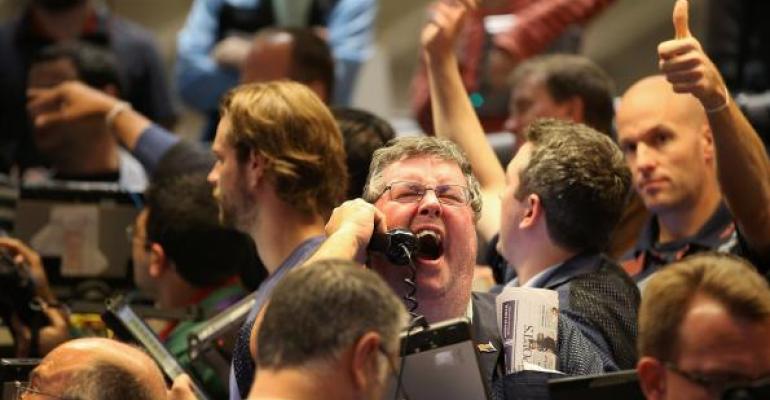By Brian Chappatta
(Bloomberg) --Wall Street strategists are continuing their soul-searching about the flattening yield curve.
The latest dive into the topic comes from Joseph LaVorgna, chief economist of the Americas at Natixis SA. He points out that the yield spread between two- and 10-year Treasuries has fallen this year to the lowest in a decade, even as expectations for Federal Reserve rate hikes, as measured by overnight index swaps, have rebounded to about where they were in December.
There’s a recent precedent for this relationship: The last time the five-year OIS measure rose at the same time that the curve persistently flattened was in 2004, when the Fed kicked off a tightening cycle that ended in mid-2006.
If history is any guide, what appears to be a classic episode of bear flattening could lend credence to the view of Janus Henderson Group’s Bill Gross -- that the spread is close to signaling a potential economic slowdown. After all, the tightening cycle that began in 2004 ended the year before an 18-month recession began.
Puzzling Part
One side of the flattening trend -- the two-year Treasury note, the coupon maturity that’s the most sensitive to immediate Fed expectations -- can be explained easily enough. With central bankers holding to their tightening projections, two-year yields are up 44 basis points this year, on pace for the biggest increase since 2005, and are close to the highest since 2008.
The more complicated part -- and what puzzles LaVorgna and other analysts -- is why 10-year yields have stuck to their tight 2017 trading range. The outlook for growth and inflation, by many measures, should be higher. Republicans are working on a tax-cut plan that could add $1.5 trillion to the deficit at a time when the U.S. unemployment rate is the lowest since 2000.
“Simply put, the Treasury market either does not believe we will get tax cuts, or, if we do, they will not lift GDP growth,” LaVorgna wrote in a Nov. 6 note. “Instead, the curve is sending us a cautious message on growth.”
The extra yield on 10-year notes over two-year debt shrank Tuesday to as little as 67 basis points, the smallest since 2007. Gross, for his part, said last week that another 20 to 30 basis points would be enough to induce a slowdown in the economy.
Others aren’t so sure. Strategists at Deutsche Bank, for example, said in a Nov. 3 note that even with a tax plan, persistent buying of long-end Treasuries by overseas investors and pensions is depressing the term premium and yields. That demand is key to the argument that with U.S. yields significantly higher than in most other developed markets, losses in Treasuries will be limited for the foreseeable future. And that doesn’t necessarily mean a recession is around the corner.
The yield curve has flattened for eight straight days, the longest streak in nearly two years. Where this trend ends is a top-of-mind question for the world’s biggest bond market.
To contact the reporter on this story: Brian Chappatta in New York at [email protected] To contact the editors responsible for this story: Benjamin Purvis at [email protected] Mark Tannenbaum, Greg Chang




